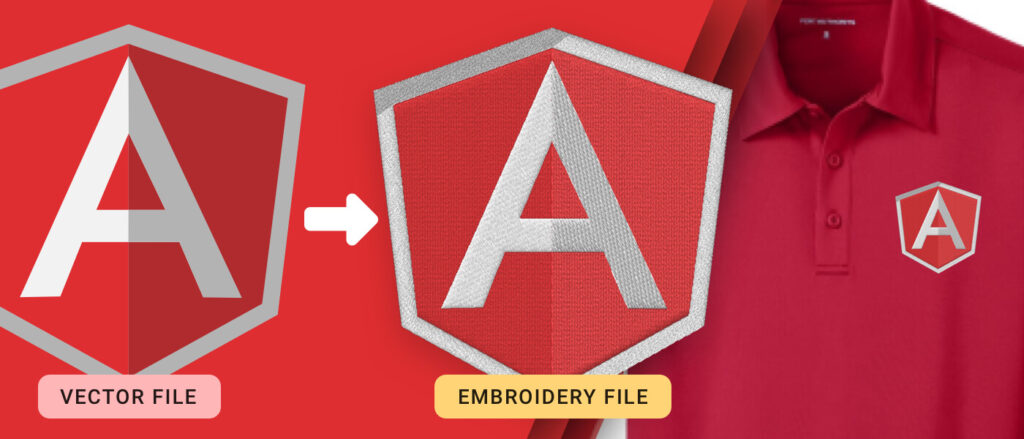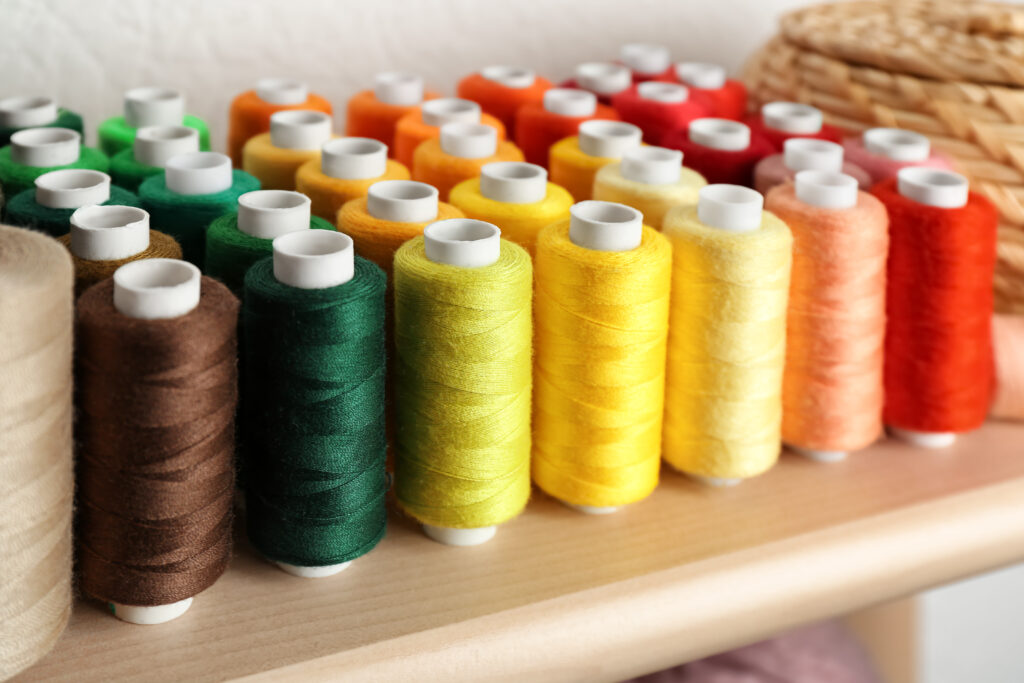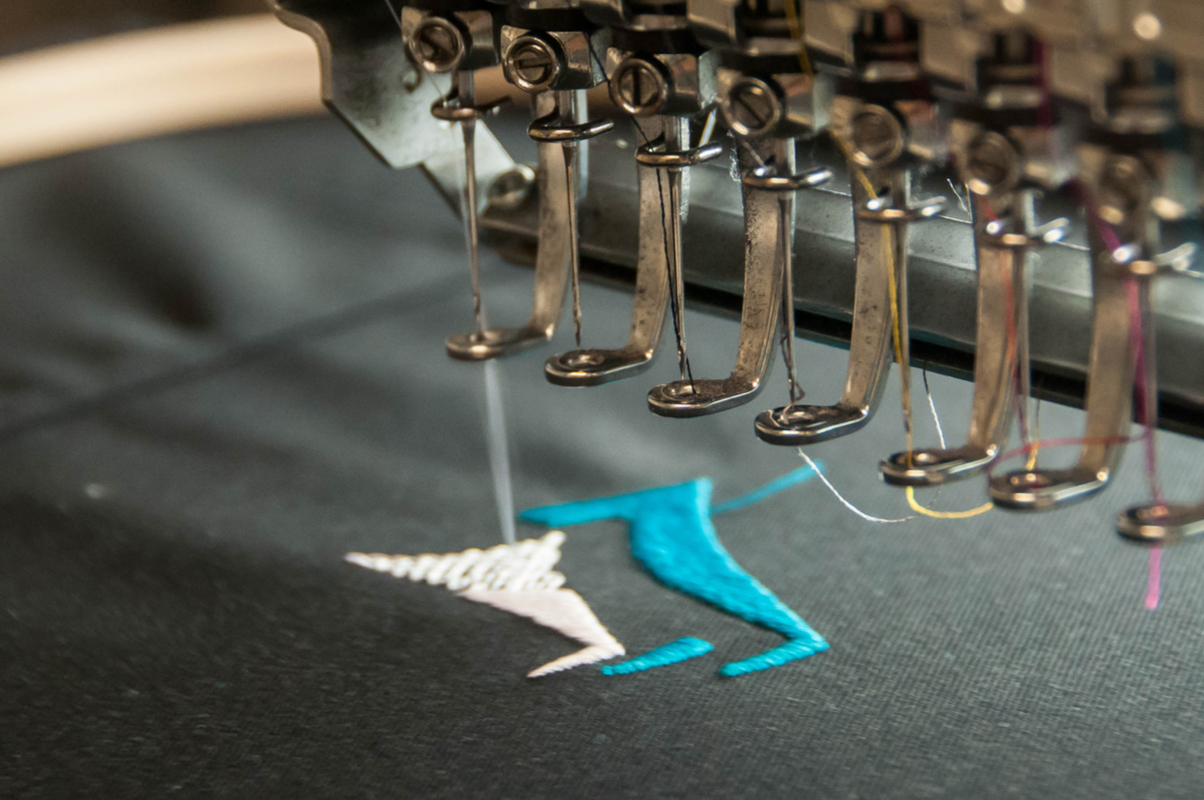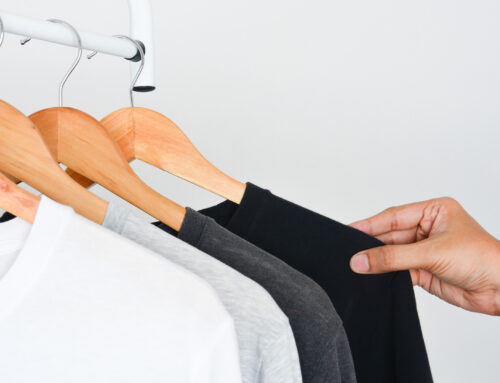You have carefully thought out a logo or design. Now it’s time to think about bringing it to life with embroidery on your garment of choice. Where do you start? What do you need to consider? Understanding what a stitch count is and how to calculate it is the key to determining two important things: cost and quality.
What is a Stitch Count?
Stitch count can be defined as the number of stitches used to embroider a particular logo or design. The larger the logo or design is, the greater the number of stitches that will be needed. A simple, small logo can take as few as 1,500 stitches, while something larger and more complex might need up to as many as 15,000 stitches.

Embroidery Digitizing
Digitizing refers to the practice of converting a piece of artwork into a digital file, using software that is compatible with an embroidery machine. The embroidery machine then uses that file to direct the needle when stitching the design onto a textile. Digitizing can seem complex, and in many cases it is. Allow our Philly printing company to do that work for you and handle all of your embroidery digitizing needs!
Calculating a Stitch Count
Calculating stitch count can be extremely helpful when determining the cost of embroidering your design. First, let’s quickly define the most popular stitch types:
- Satin stitch: a flat stitch that completely covers an area
- Fill stitch: fills in specific parts of a design
- Running stitch: a horizontal run of stitches
- Bean stitch (double running): a double horizontal run of stitches
Now, the following is a basic rule of thumb for estimating stitch count:
Stitch Type Calculations:
- 1 square inch of fill stitches: 1200 Stitches
- 1 linear inch of satin stitches: 150 Stitches
- 1 linear inch of running stitches: 50 Stitches
- 1 linear inch of bean (double running) stitches: 75 Stitches
Stitch Text Calculations:
- 5mm – 6mm height (approx .2 – .24 inch): 100 Stitches per letter
- 7mm – 8mm height (approx .28 – .32 inch): 150 Stitches per letter
- 9mm – 10mm height (approx .35 – .4 inch): 200 Stitches per letter
Now that you have a basic estimate of different types of stitches, use that to help you determine the stitch count of your design. Let’s examine an example of one design that includes a 3” x 2” school logo (“S”), with a border, and a student name embroidered in 5mm letters underneath:
- First, you need to estimate the fill stitch areas of the school logo (“S”). You can do this by overlaying your design over a grid that uses 1” by 1” or 5mm x 5mm grid lines. Lay your design over your chosen grid pattern. How many squares does the overlay of your design take up? Any partial square that is not covered by your design may be subtracted from the total number of squares that you counted. (For example, if you have four half squares that are not covered by the design, you can subtract two squares from your number.) That would account for the fill stitch areas.
- Next, estimate the fill satin stitches to be used for the border: Measure the borders of the logo (“S”) and account for that measurement of fill satin stitches.
- Finally, calculate the estimate for the text underneath the logo by counting the number of letters in the student’s name.
After all that counting, you may estimate the final tally of stitches to equal about 11,000:
- 5 sq inches of fill x 1,200 = 6,000 stitches
- 28 linear inches of satin x 150 = 4,200 stitches
- 8 letters at 100 each = 800 stitches.
- Total Estimated stitches: 11,000
Would you rather skip all that counting and have us do it for you instead? Contact us today for a quote!

Choosing a Thread
Not all threads are created equal! Embroidery thread can be made from both natural or synthetic fibers. The most common types are rayon, polyester, cotton, silk, and some specialty types. Each has its own strengths and is used for different purposes. Of course, they all have their own price point too! When it’s time to embroider your logo or design, you will want to examine the different thread types to find the one that fits both your aesthetic and budget needs.
In addition to thread fibers, each thread has a “weight.” In the case of thread, the smaller the number, the heavier the thread and vice versa.
Why Does it Matter?
Calculating a stitch count and choosing the right thread can help you determine the quality of your finished products and how much your design will cost when you go to have it embroidered.
Embroidery, Philadelphia, PA
If looking for embroidery, Philadelphia brands and residents can turn to Press & Release Printing. As one of the best embroidery and printing companies in Philadelphia, we can help with everything from design to mock-ups to production. Contact Us today to learn more.
Read Next: Show Clients Your Appreciation with Thank You Gifts

